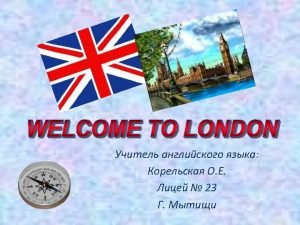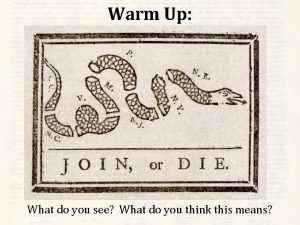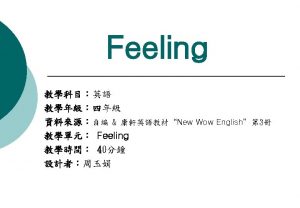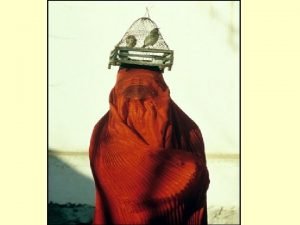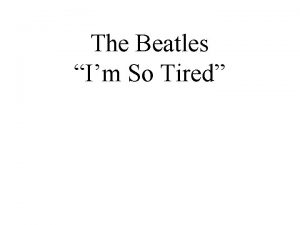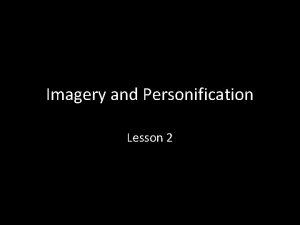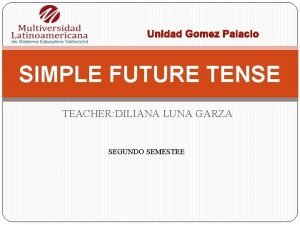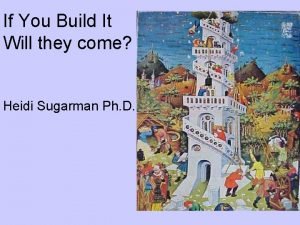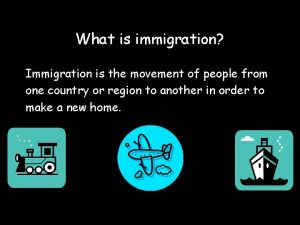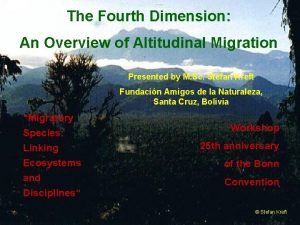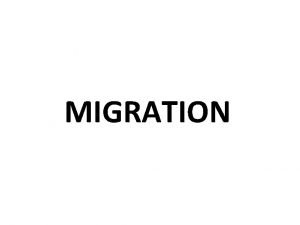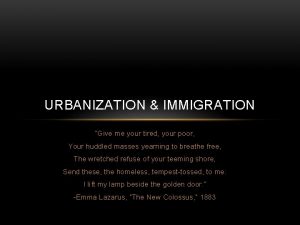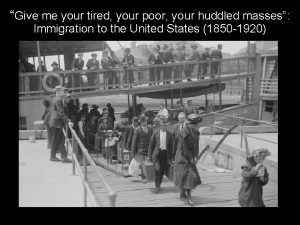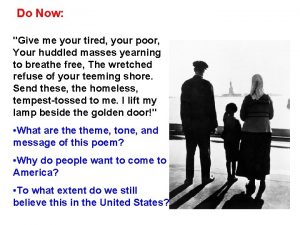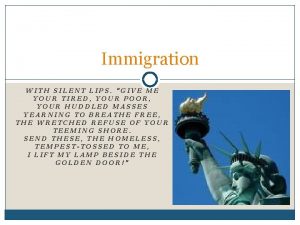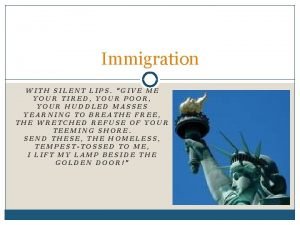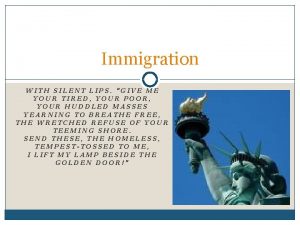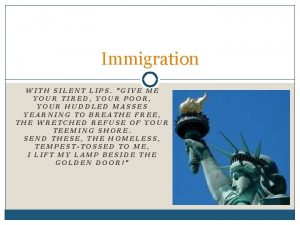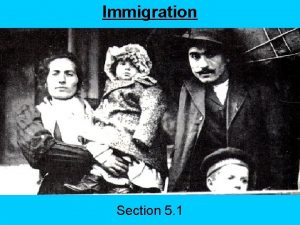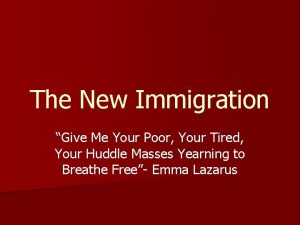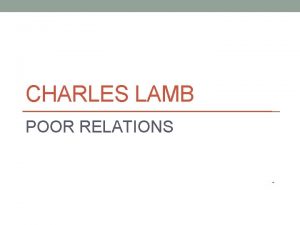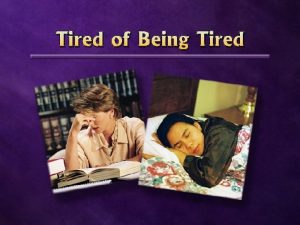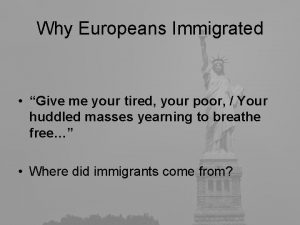Immigration Give me your tired your poor your



























- Slides: 27

Immigration “Give me your tired, your poor, your huddled masses yearning to breathe free, the wretched refuse of your teeming shore. Send these, the homeless, tempest -tost to me, I lift my lamp beside the golden door!”

Where? http: //metrocosm. com/ us-immigration-historymap. html



Ellis Island https: //www. loc. gov/item/00694368 Ellis Island, New York, N. Y. [Inspection room, Ellis Island, New York, N. Y. ]

Angel Island From 1910 to 1940, Immigration Station opens at China Cove by the Bureau of Immigration Considered the “Ellis Island of the West” This facility was mainly created to help keep Chinese and eventually other Asian immigrants out of the country

Health Inspection Initial Inspection: Six Second Physical – uniformed doctor looked for any signs of illness or contagious diseases What the doctors were looking for? - Signs of limping - Shortness of breath - If their eyes were red - Coughing - Scratching

Health Inspection Immigration Act of 1891 forbade anyone with a dangerous contagious disease from entering the country Detection marks process: chalk

Literacy Testing Immigration Act of 1917 – required all immigrants, 16 or older to read a 40 - word passage in their native language (test to inspect immigrants’ literacy) Also called mental testing, this was a way for doctors to diagnose any mental defects. If immigrants were marked with an “X” during examination, they were further tested (process of weeding out people) - Asked to answer a few questions about themselves, - Solve simple math problems - Count backward from 20 to 1 - Complete a puzzle

Reasons for Immigration Push factor – condition that drives people from their homeland Pull factor – condition that attracts people to move to a new area

Push Factors

Why do people immigrate? Religious persecution Famine/ poverty Political turmoil New opportunities in the form of land, education, employment, etc.

Religious/ Political Persecution- hostility and ill-treatment, especially because of race or political or religious beliefs. Fleeing persecution 1. Russian Jews – From 1880 to 1914, approximately 3 million Jews fled to the U. S. in order to escape pogroms. Pogroms – organized attacks on Jewish villages 2. Armenians – The Ottoman Empire (location: modern day Turkey) killed approximately 2 million Armenians

Famine/ Poverty Famine - extreme scarcity of food. Irish Potato Famine – occurred because of Irish dependency on potatoes in the 1840’s and led to over 1 million people dying in Ireland Led to an increase by about 1. 5. million Irish immigrants coming to the U. S. by 1860

Political Turmoil Political unrest - is a term often used to describe a state of extreme unrest, unease or agitation, in relation to a government or other policy-making body. Mexico – Due to violence occurring from the Mexican Revolution (1910), thousands of Mexicans came to the U. S. About 700, 000 Mexicans came to the U. S.

Land Shortage German English African Due Italian Japanese Mexican Puerto Rican American Irish to a large increase in the European population, land became scarce (examples: Germany and Italy)

Pull Factors

Employment Between 1880 -1900 thousands of factory jobs became available in the United States because of westward expansion and development of new industries

Land Homestead Act – Passed in 1862 by Congress, it granted citizens of the United States 160 acres of land in western areas of the country (320 acres per couple) http: //www. campsilos. org/excursions/grout/one/pushpull. htm

Consequences of Immigration

Nativism - the policy of protecting the interests of native-born or established inhabitants against those of immigrants. - Many Americans viewed immigrants with a sense of fear, suspicion, and hostility Out of nativism grew many antiimmigrant groups that pushed for anti-immigrant legislation

Anti- Immigration Sentiment & Legislation Groups of nativists demanded for limits on immigration and many other restrictions on immigration - The American Protective Association: launched anti. Catholic attacks - Many colleges, businesses, and social clubs didn’t admit Jews Legislation - Chinese Exclusion Act (1882): banned entry of all Chinese immigrants except students, teachers, merchants, tourists, and government officials - 1921 Emergency Quota Law: temporarily limited the numbers of immigrants to the U. S. by imposing quotas based on country of birth

Assimilation The process whereby a minority group gradually adopts the customs and attitudes of the majority culture - Process was slow and long Ways to assimilate - Learning to read and write in English - Children wanted to be seen as Americans - Wore American clothing - Played American games

Immigration & Urbanization

Urbanization Process that refers to population growth in the cities from rural and suburb areas. Occurred as a result of industrialization and technological inventions which decreased the amount of laborers needed to work in farms From 1870 to 1920, the urban population jumped from 10 million to 54 million Approximately 2/3 of immigrants settled in cities - Boston, New York, Chicago, and Philadelphia

Ethnic Ghettos/ Neighborhood Communities were created by immigrants and provided a sense of security for immigrants because - they are surrounded by familiar customs - familiar food - same language (maybe different dialects) [Italian neighborhood with street market, Mulberry Street, New York]

 Give us your hungry your tired your poor
Give us your hungry your tired your poor When a man is tired of london he is tired of life
When a man is tired of london he is tired of life What is the main idea of give me liberty or give me death
What is the main idea of give me liberty or give me death +sad bored angry scared tired hungry 834
+sad bored angry scared tired hungry 834 Reported and quoted speech
Reported and quoted speech Im so tired lord
Im so tired lord Happy sad angry tired
Happy sad angry tired Short prayer
Short prayer A tired squirrel (mass of 1 kg)
A tired squirrel (mass of 1 kg) For every girl who is tired of acting weak
For every girl who is tired of acting weak Sarah's uncle's car was found
Sarah's uncle's car was found Im so tired beatles
Im so tired beatles A tired squirrel does push ups
A tired squirrel does push ups Matthew 11 28-30 message
Matthew 11 28-30 message Whats personification mean
Whats personification mean What's the matter you look really tired
What's the matter you look really tired Funny superlatives
Funny superlatives Tired future tense
Tired future tense Drunk
Drunk How to describe tired eyes
How to describe tired eyes Goldilocks and the three bears
Goldilocks and the three bears What is the immigration
What is the immigration What is immigration
What is immigration How did esperanza help marta during an immigration sweep
How did esperanza help marta during an immigration sweep Fourth dimension immigration
Fourth dimension immigration Difference between immigration and emigration
Difference between immigration and emigration Gravity model ap human geography
Gravity model ap human geography Immigration vs emmigration
Immigration vs emmigration

